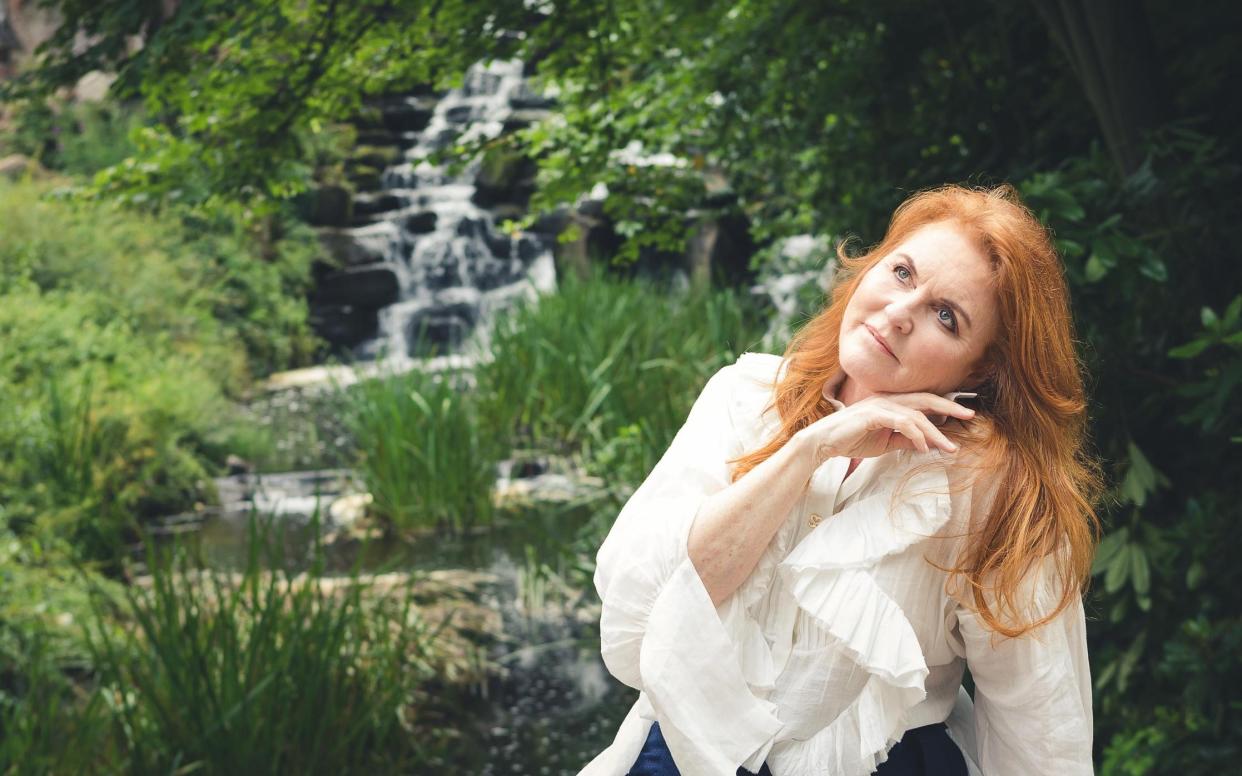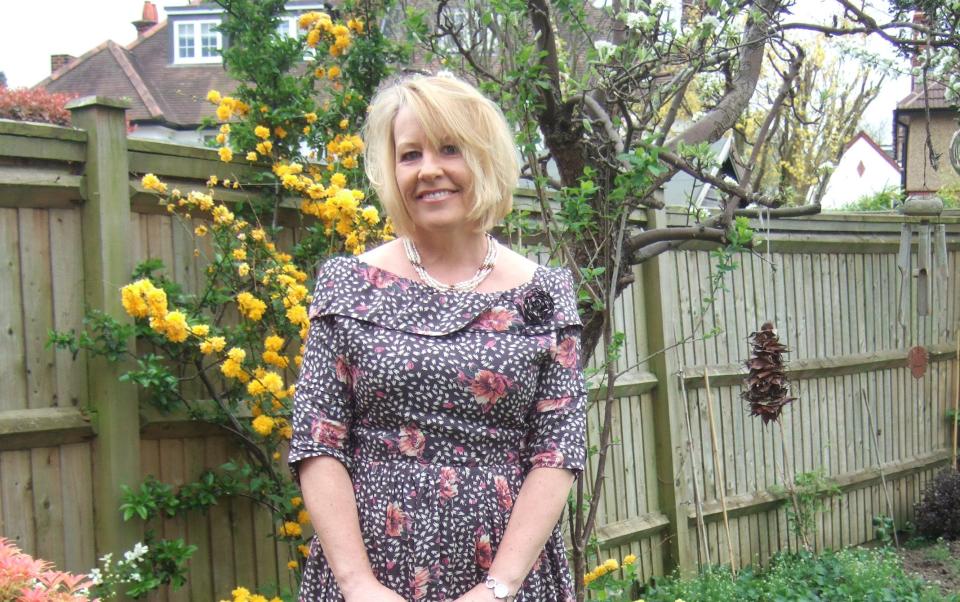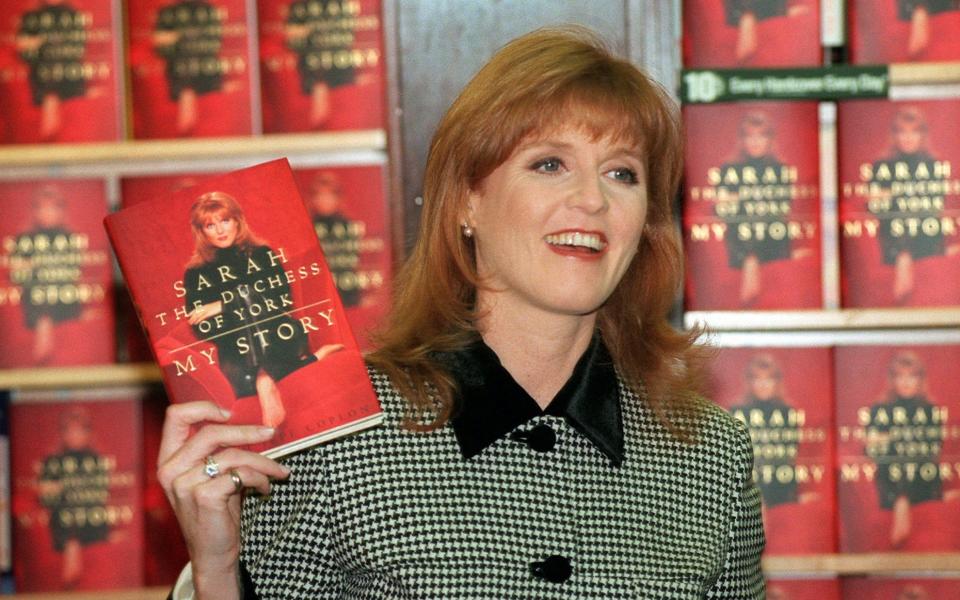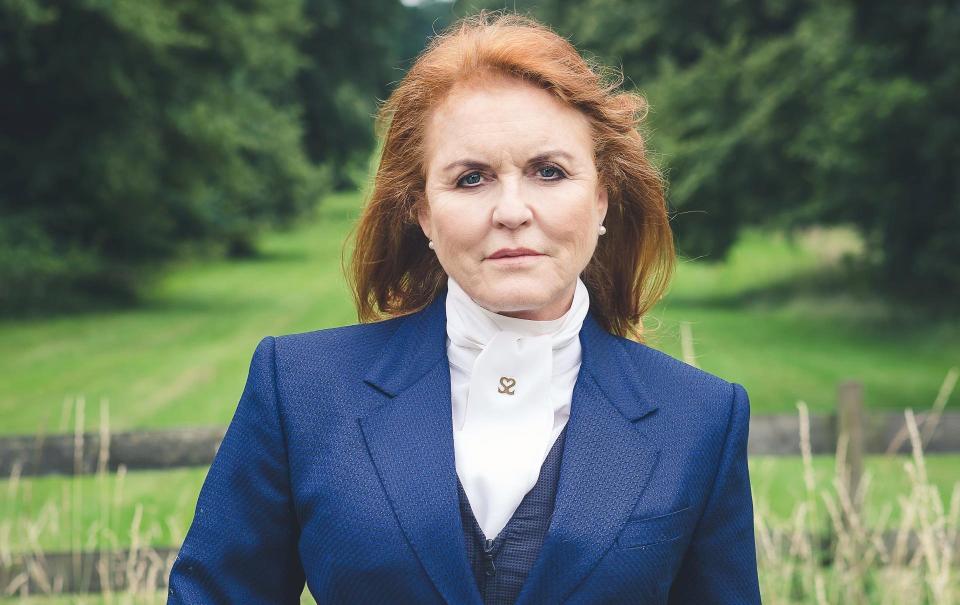The Duchess of York’s co-author: ‘I didn’t do all the writing – there’s masses of Sarah in the book’

- Oops!Something went wrong.Please try again later.
Most authors are lucky if their agent takes them anywhere more glamorous than The Dog and Duck to discuss a new literary project. So it was something of a change of scene for Marguerite Kaye when she learned that she was meeting a potential new co-writer at Buckingham Palace.
The co-writer in question was Sarah, Duchess of York. They hit it off, and together they have produced Her Heart For a Compass, an entertaining romp through the life of Fergie’s red-headed great-great-aunt, Lady Margaret Montagu Douglas Scott.’
The book is published by Mills & Boon, the firm synonymous with high-spirited romance. Kaye is a Mills & Boon veteran - she has received the Tiffany pen awarded to M&B authors when they reach 50 publications - and specialises in historical romances, which is why her name was put forward when it emerged that Sarah Ferguson had an idea for her debut novel and was looking for a collaborator.
I ask Kaye if she was intimidated during that first meeting at Buckingham Palace? “No, because I was so focused on the interview. It’s a new career for Sarah but it was also a huge step for me - I’ve never written a book with somebody else before and I didn't even know if I was up to the job. I thought the idea for the novel sounded absolutely amazing, but I had no idea if we could work together.
“It was supposed to be a half-hour chat, but - it’s one of those things that doesn’t happen very often - we genuinely got each other straightaway, we really, really liked each other, and we found we couldn’t speak fast enough. I think it was two and a half hours that first meeting, talking about what the book was about and how we’d go about it. I really didn’t have time to be intimidated by the surroundings and to be honest I couldn’t really remember much about them, much to my sister’s dismay when she asked me about it.”

It’s a new world for Kaye, and not one she has previously had much interest in. “Nobody ever believes me when I say this, but I really didn’t know anything about [Sarah Ferguson], I’m not a royal-watcher, so I genuinely knew next to nothing about her and I’ve tried very hard to keep it that way... I decided I was going to take her entirely as I found her. I genuinely did not, and have done, no research on her.”
Kaye managed a handful of face-to face meetings with the Duchess before the pandemic struck. Since then, the collaboration has involved endless phone calls, emails and WhatsApp messages. “I’ve got so many notebooks of our conversations. I can’t imagine how many hours we’ve spent on the phone.”
What is the Duchess like to work with? “Endlessly enthusiastic. And she’s got a really vivid imagination, and when she sees a person or a character or an object, she’s got a really clear vision of it in her head and she talks about things as if they’re on camera and paints a really vivid picture. My strength is making narrative sense of that.
“Sometimes she goes off down a track that’s maybe a bit too wild or doesn’t make sense, sometimes she goes so fast that I have to say, slow down, slow down. I think I’m very good at creating order, and in that sense we’re very complementary... The other thing she’s got, with people in real life and with the characters, is a real empathy. That’s why I hope people will think the characters are well-rounded, there’s that real emotional depth behind them.”
She is keen to point out that it’s not simply a case of the Duchess providing an outline and Kaye doing the research. “She had a sounder historical sense than I did of some of the details of the period, because of her previous work on the Victorian age. I’ve had to learn to catch up sometimes.”
She is not pleased, either, at the widespread assumption that she has taken the Duchess’s story and done all the writing: “It was never: here’s the story, away ye go and tell it. There’s masses of her writing in there. I get quite annoyed at the way people keep saying that, it’s simply not true… I’ve learnt so much from her about - we call it Netflixing - how to put pace in. I’ve learned that from her as a writer - my other writing has changed quite a lot as a result of that process.”
But is it the case that, as the senior partner in the project, Fergie’s word goes? “She would be appalled to hear you say ‘the senior partner’. She’s very very modest and has been very open about wanting to learn about the writing process. If anything, the problem I had at the start was getting her to voice her opinion when it was clear to me that she wasn’t happy with something. She didn’t want to hurt my feelings.
“It was about getting Lady Margaret’s voice and character on the page. Because she knew her so well, because she’s been carrying her around in her head for so long, it took me quite a long time to get to know the character, so I got it wrong a few times, and getting her to say she thought I’d got it wrong was quite difficult.”
Sarah Ferguson first became interested in Lady Margaret, daughter of the 6th Duke of Buccleuch, some 15 years ago, while researching her family history for an (unmade) episode of the BBC’s Who Do You Think You Are? Very little is known about Lady Margaret’s life, giving the co-authors the freedom to send her off on various adventures around England, Scotland and Ireland before whisking her off to become a philanthropist and successful children’s author in 1860s New York.
With her “rebellious red mop” and impatience with stuffy aristocratic conventions (“I was not expected to have an adventurous mind, let alone a restless spirit”), as well as following a similar career path, this version of Lady Margaret comes across rather like a Victorian Fergie.
“There are obvious parallels, but I was trying to capture Lady Margaret’s voice, which is not the Duchess’s,” says Kaye. “[Margaret] must have been remarkable, somebody who came from this massively influential family and who would have been born and bred just to get married off and have children - but she didn’t marry until she was 29. What stopped her, at a time when women didn’t even exist in the eyes of the law unless you were a child or you were a wife? The only conclusion you can draw is that she must have been extraordinary.”

Some critics have complained that they expected more bodice-ripping from a Mills & Boon, but Kaye points out that, despite Margaret’s many crushes throughout the book, the character is ultimately more interested in making an independent life for herself before she settles down. The lack of sex wasn’t about sparing the Duchess’s blushes: “The decision was to do with the character and the historical context - there was never an embargo on it.”
In fact, the novel is a fairly typical Mills & Boon, Kaye says. “Many people - my father is one of them - find them easy to make fun of. But this very old-fashioned idea that Mills & Boon is all somebody doing their ironing and then suddenly getting swept up by a billionaire and living happily ever after, is just rubbish. Heroines in Mills & Boon romances find their own happiness - the hero is not responsible for defining their life and making them happy, although he can make them happier.”
Kaye’s name appears on Her Heart for a Compass’s title page but not the front cover, which boasts two of her co-author’s names: “Sarah Ferguson, Duchess of York”. As a successful author in her own right, does she not resent this just a little? “No, because Sarah has been clear and upfront [about Kaye’s involvement] and been incredibly generous with bandying my name about... I think I would have been less happy actually if I had been less involved in the writing and got more acknowledgement.
“I’m also perfectly aware that if I had written a book like that on my own - not that I could have written this book without her - it would probably be languishing, neglected. I live in the real world and I can’t bring to the party what she does. So I’m happy to be a collaborative partner.” She gently ticks me off for using the phrase “ghost writer” - ghosts are writers who are not acknowledged.

Does she mind that some of the reviews were sniffy? “Because of [Sarah’s] personality and the amount of press she gets there were always going to be issues there, but my attitude is the more reviews the better, then more people will read the book.” And how is she coping with this level of exposure? “It’s certainly different, appearing on national television with the Duchess this morning and trying not to be sick.”
Kaye, the daughter of a teacher from Argyll, worked as an IT consultant before taking redundancy at 40 and trying to make it as a writer: the first manuscript she sent to Mills & Boon was accepted (although she had sent them another many years earlier which was - quite rightly, she says - rejected). It’s not a background that many of Sarah Ferguson’s friends have, perhaps, but the two co-authors have become pals.
“It’s a kind of strange friendship, we’re very, very close and we talk about everything in the world. When I saw her last week it was the first time I’d met up with her in about two years and yet it didn’t feel at all strange. This [relationship] has come as a complete surprise to me and I think her too, it's not one of the things I thought I would get out of working with her, but it’s fabulous, and that’s why we’re working together again.”
Their next book will not be a direct sequel but will be set in the same period. “We have started it. The difference between her starting this book and the last one is her confidence now. Her understanding of the actual process is amazing. It’s wonderful to see.”
Her Heart For a Compass is available from Telegraph Books, priced £6.99

